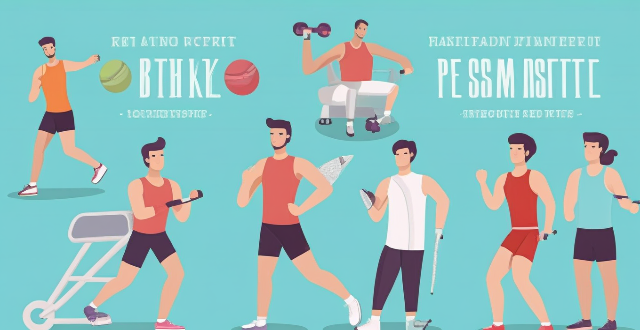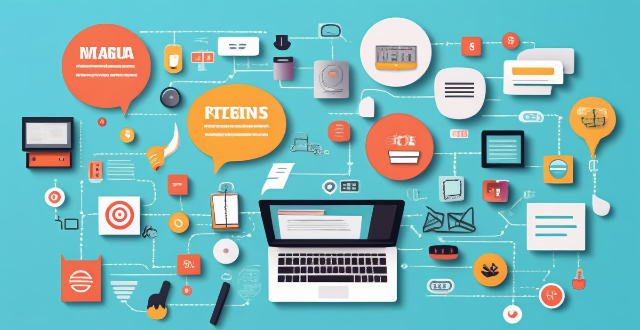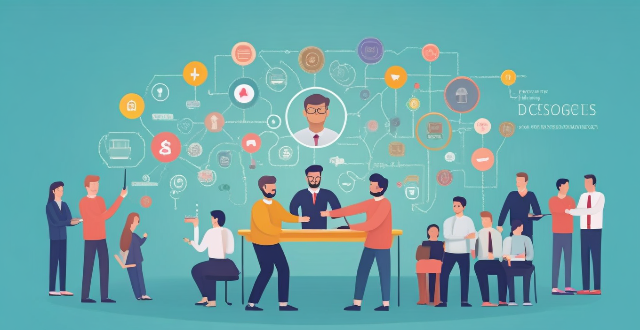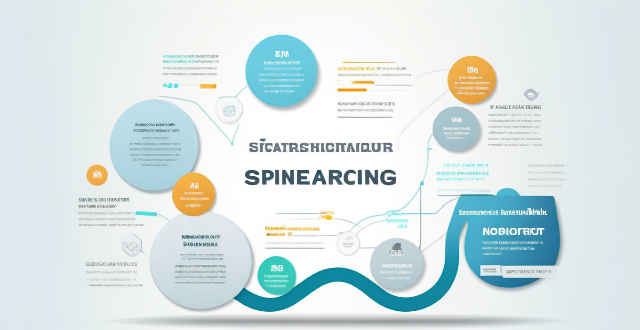Connection Social

How do outdoor sports like hiking or mountaineering foster a deeper connection with nature and improve mental health ?
The text discusses the connection between outdoor sports, particularly hiking and mountaineering, and mental health. It highlights how these activities offer physical benefits such as fresh air and sunlight, which boost mood and energy levels, and the release of endorphins through physical activity. Mentally, being in nature encourages mindfulness and presence, reducing stress and anxiety, while the grandeur of nature can provide perspective on everyday worries. Physical challenges build stamina and resilience, with a sense of accomplishment from completing trails or reaching summits. Mental challenges include problem-solving and building resilience. Social interaction through shared experiences and forming supportive communities is also beneficial. Personal growth aspects include self-reliance and adaptability. The mind-body connection is emphasized through the meditative effects of nature and sensory engagement, as well as the physical well-being derived from cardiovascular health and muscle strength. Overall, outdoor sports like hiking or mountaineering provide numerous opportunities for improving mental health through various means.

What is the connection between urban green spaces and public health ?
Urban green spaces, such as parks and gardens, promote public health by improving air quality, encouraging physical activity, reducing stress, fostering social connections, and providing access to healthy food options. These spaces are crucial for the physical, mental, and social well-being of city residents.

Is there a connection between sports and improved mental well-being ?
The relationship between sports and improved mental well-being is evident in numerous studies, indicating that engaging in physical activities significantly contributes to an individual's overall psychological well-being. This connection can be analyzed from various angles, including physiological responses, social interactions, personal development, and the role of subjective class identity and health. Physiological responses to sports include endorphin release and stress reduction, while social interactions provide opportunities for teamwork and belongingness. Personal development through sports enhances self-esteem and discipline. The mediating roles of class identity and health also play a part in this relationship. Overall, sports participation positively affects individuals' subjective well-being through various mechanisms, enhancing their mental health and overall quality of life.

How do I troubleshoot a faulty network connection device ?
This text provides a step-by-step guide on how to troubleshoot a faulty network connection device. It starts by identifying the problem, checking physical connections, restarting the device, checking network settings, updating firmware, checking for interference, and finally contacting support if all else fails. The text emphasizes the importance of patience and perseverance in troubleshooting technical issues.

How do I optimize my network connection device for video conferencing ?
Optimizing your network connection device for video conferencing is essential for a smooth and reliable communication experience. Here are some steps to follow: 1. Check Your Internet Speed: Test your connection speed and upgrade your plan if necessary. 2. Choose the Right Hardware: Use a wired Ethernet connection if possible, and ensure that your router and modem are up-to-date. 3. Optimize Your Network Settings: Set up Quality of Service (QoS) on your router and keep its firmware updated. 4. Minimize Interference: Reduce wireless interference and limit bandwidth usage during important video calls. 5. Use a Dedicated Network for Video Conferencing: Create a separate Virtual Private Network (VPN) or invest in business-grade networking solutions. By following these steps, you can optimize your network connection device for video conferencing, ensuring smooth and reliable communication with colleagues and clients around the world.

Is it better to use a wired or wireless connection for gaming consoles ?
When it comes to gaming consoles, the choice between a wired and wireless connection can significantly impact your gaming experience. Wired connections typically offer faster speeds, lower latency, and more stable connections but limit mobility and can create a cluttered setup. Wireless connections allow for increased mobility and a cleaner setup but may have slower speeds, higher latency, and potential interference from other devices. The choice between a wired and wireless connection depends on your specific needs and preferences, such as the type of games you play and the layout of your home.

Are there any specific exercise programs designed for seniors that focus on building social connections ?
The article discusses the benefits of exercise programs for seniors that focus on building social connections. It highlights how regular exercise can improve physical health, mental health, and increase social connections in seniors. Examples of such programs include SilverSneakers, Tai Chi, walking groups, yoga, and water aerobics. The article emphasizes the importance of staying active and connected within communities as we age.

What role does social media play in digital marketing ?
The Role of Social Media in Digital Marketing Social media has become an essential component of digital marketing, offering businesses numerous opportunities to promote their products and services online. Here are some key ways social media influences digital marketing: 1. Brand Awareness and Visibility - Increased Exposure: Social media platforms offer businesses a chance to reach a wider audience, increasing brand visibility. - Targeted Ads: Platforms like Facebook and Instagram allow for targeted advertising, ensuring that the right message reaches the right people. - Hashtags and Trending Topics: By participating in trending topics and using relevant hashtags, brands can increase their visibility and join conversations that align with their values. 2. Customer Engagement and Interaction - Direct Communication: Social media provides a platform for direct communication between businesses and customers, fostering better relationships. - Instant Feedback: Businesses can receive immediate feedback from customers, helping them improve products or services quickly. - Loyalty and Advocacy: Engaged customers often become brand advocates, promoting the business through word-of-mouth on their own social networks. 3. Content Marketing - Rich Media: Social media allows for various forms of content, including images, videos, and articles, making it easier to engage users. - Storytelling: Brands can use social media to tell stories that resonate with their audience, creating an emotional connection. - Influencer Collaborations: Partnering with influencers can help extend a brand's reach and credibility among specific demographics. 4. Lead Generation and Conversion - Promotions and Discounts: Social media is an effective channel for promoting sales and discounts, driving traffic to websites or physical stores. - Contests and Giveaways: These activities not only generate excitement but also encourage user-generated content, further expanding a brand's reach. - Retargeting: Through retargeting ads, businesses can remind potential customers of their interest in a product or service after they've interacted with the brand online. 5. Data Collection and Analysis - Insights and Analytics: Most social media platforms provide analytics tools that offer valuable insights into customer behavior and preferences. - Audience Segmentation: By analyzing social media data, businesses can segment their audience and tailor their marketing efforts accordingly. - Competitive Analysis: Social media also allows businesses to monitor competitors' activities and strategies, helping them stay ahead in the market. In conclusion, social media plays a multifaceted role in digital marketing, from enhancing brand visibility to facilitating customer interactions and generating leads. As technology continues to evolve, so will the ways in which social media influences digital marketing strategies.

What are the key factors that contribute to social harmony ?
Social harmony is a state of peaceful coexistence and cooperation among individuals, groups, and communities within a society. Key factors contributing to social harmony include respect for diversity, communication and dialogue, education and awareness, equality and fairness, law and order, civic participation and volunteerism, and economic stability and prosperity. By promoting these factors, societies can create a more peaceful and cooperative environment where everyone can thrive.

What are some common mistakes that celebrities make on social media ?
Celebrities often make mistakes on social media, such as oversharing personal information, not being authentic, ignoring negative comments, posting inappropriate content, failing to engage with fans, having inconsistent brand images, not taking advantage of promotional opportunities, lacking transparency, poor timing of posts, and emotionally venting on public platforms. By avoiding these pitfalls, celebrities can maintain a strong presence on social media and foster deeper connections with their fans.

What are some examples of successful celebrity social media campaigns ?
Social media has become a powerful tool for celebrities to connect with their fans and promote their work. Successful celebrity social media campaigns include Beyoncé's Lemonade album release, Dwayne "The Rock" Johnson's Motivational Mondays, Ellen DeGeneres' Oscar selfie, and Lady Gaga's Born This Way Foundation. These campaigns have used exclusivity, visual content, personal touch, consistency, inspirational content, personal branding, timing, star power, humor, purposeful content, engaging fans, and alignment with personal values to achieve success.

How do you create a successful social media marketing campaign ?
Creating a successful social media marketing campaign requires a strategic approach that involves careful planning, execution, and monitoring. The key steps include defining goals, knowing your audience, choosing the right platforms, creating compelling content, utilizing paid advertising, engaging and interacting with your audience, and monitoring and analyzing performance. By following these steps, you can create a successful social media marketing campaign that not only meets your objectives but also establishes a strong online presence for your brand.

What are the latest trends in social media marketing ?
Social media marketing trends businesses should consider include personalization, video marketing, influencer marketing, social listening, and shoppable posts. Personalization helps brands connect with their audience on a more personal level, while video marketing allows for visually engaging content that can lead to higher engagement rates. Influencer marketing enables businesses to reach new audiences and build trust, while social listening provides insights into consumer sentiment and identifies opportunities for improvement. Shoppable posts streamline the purchasing process and increase conversion rates.

What are the benefits of using influencer marketing in social media ?
Influencer marketing in social media offers benefits such as increased brand awareness, targeted audience engagement, cost-effective marketing, authentic content creation, accelerated growth opportunities, strategic placement and promotion, and complementary creative direction. By leveraging influencers with a significant following, companies can reach new audiences and enhance their credibility. Influencers often cater to specific niches, allowing for highly targeted demographic engagement. They create user-generated content that resonates more with consumers than polished advertisements. Collaborations with influencers can lead to long-term partnerships and co-marketing opportunities. Influencers can promote brands across multiple social media platforms and provide analytics on their campaigns. They bring fresh perspectives to a brand's creative direction and can keep it relevant by aligning with current trends. It is essential to choose the right influencers and manage these relationships effectively to ensure success in influencer marketing endeavors.

How can women master the art of small talk in social gatherings ?
Small talk is a valuable social skill that can help women navigate various social gatherings with confidence. By understanding its power, preparing oneself, initiating conversations with a smile and open-ended questions, maintaining conversations by finding common ground and sharing about oneself, and exiting gracefully, women can master the art of small talk. It's important to stay positive, be genuine, and not force conversations. With practice, small talk can become a natural part of social interactions, leading to meaningful connections and a positive first impression.

What role does social media play in shaping a celebrity's image and brand ?
The text discusses the role of social media in shaping a celebrity's image and brand. It outlines six key ways in which social media impacts a celebrity's public perception and personal branding: connecting with fans, controlling the narrative, promoting projects, endorsements and sponsorships, crisis management, and personal branding. The text emphasizes that social media is an integral part of modern society and plays a significant role in building a loyal fan base, generating buzz for projects, expanding reach and influence through endorsements, handling crises effectively, and developing a distinct personal brand.

Is there a connection between physical fitness and self-esteem ?
The article discusses the relationship between physical fitness and self-esteem, stating that engaging in regular exercise and maintaining a fit body can improve one's body image, confidence, mental health, and social interaction. In contrast, poor physical fitness can lower self-esteem by negatively impacting body image, confidence, stress levels, and leading to isolation. The author concludes that maintaining good physical fitness is essential for overall well-being and self-esteem.

Is there a connection between sports and happiness ?
The text discusses a study that found a significant, positive connection between sports participation and individual subjective well-being. The study also found that the impact of sports participation on subjective well-being varies depending on the population being studied and that class identity and health play a mediating role in this relationship. Overall, the study highlights the importance of physical activity for improving individuals' overall well-being and suggests that national fitness and health initiatives should be promoted to improve society's overall well-being.

What role does social media play in the promotion of sports and fitness ?
Social media plays a significant role in promoting sports and fitness by connecting people with similar interests, providing access to information and resources, enhancing brand awareness and marketing efforts, facilitating fundraising and charitable events, and encouraging healthy lifestyle choices. It has become an essential tool for creating communities around various sports and fitness activities, allowing individuals to find like-minded individuals, form communities, and share their experiences, knowledge, and achievements. Social media also offers a vast amount of information and resources related to sports and fitness, making it possible for individuals to learn about new techniques, training methods, and health tips without leaving their homes. Additionally, social media platforms often feature live streams of sporting events, allowing fans to watch their favorite teams and athletes compete in real-time. In conclusion, social media is an effective tool for promoting sports and fitness, and its impact will continue to grow as technology evolves.

What is the difference between fiber optic and cable broadband connections ?
The text compares and contrasts two types of internet connections: Fiber Optic and Cable Broadband. It discusses their differences in terms of speed, reliability, availability, cost, and installation. The conclusion suggests that the choice between the two depends on the user's needs and budget.

What are the best practices for social media advertising ?
Best practices for social media advertising include defining goals, understanding the audience, choosing the right platform, creating compelling content, optimizing for mobile devices, testing and refining ads, monitoring budget, leveraging social proof, and staying up-to-date with platform changes. These strategies help achieve better results in terms of engagement, lead generation, and sales.

Can social media platforms be used to enhance social harmony ?
Can social media platforms be used to enhance social harmony? The text discusses the positive impact of social media on social harmony, including connectivity and communication, sharing information and ideas, and civic engagement and activism. However, it also highlights challenges and risks such as misinformation and fake news, online harassment and cyberbullying, and echo chambers and polarization. The conclusion states that social media platforms have the potential to enhance social harmony, but challenges must be addressed to ensure their positive impact.

How does sports sponsorship influence the marketing strategies of competing brands in the same industry ?
Sports sponsorship has a significant impact on marketing strategies by increasing brand awareness, differentiation from competitors, creating emotional connections with consumers, and improving public relations. Examples include Coca-Cola's sponsorship of the FIFA World Cup, Nike's partnership with Michael Jordan, Gatorade's sponsorship of Serena Williams, and Adidas' participation in Run for Peace. These benefits help brands stand out in crowded markets and are likely to continue driving investments in sports sponsorship as part of overall marketing strategies.

What are the social implications of environmental degradation ?
The article discusses the social implications of environmental degradation, including health impacts such as air pollution and water pollution, economic impacts such as loss of biodiversity and job losses, social impacts such as displacement and cultural loss, and political impacts such as conflicts and refugees. It emphasizes the need for collective action to address these challenges and protect the natural environment for future generations.

How does social harmony impact economic development and stability ?
Social harmony is essential for economic development and stability, as it increases productivity, reduces conflict, improves governance, attracts foreign investment, and enhances social cohesion.